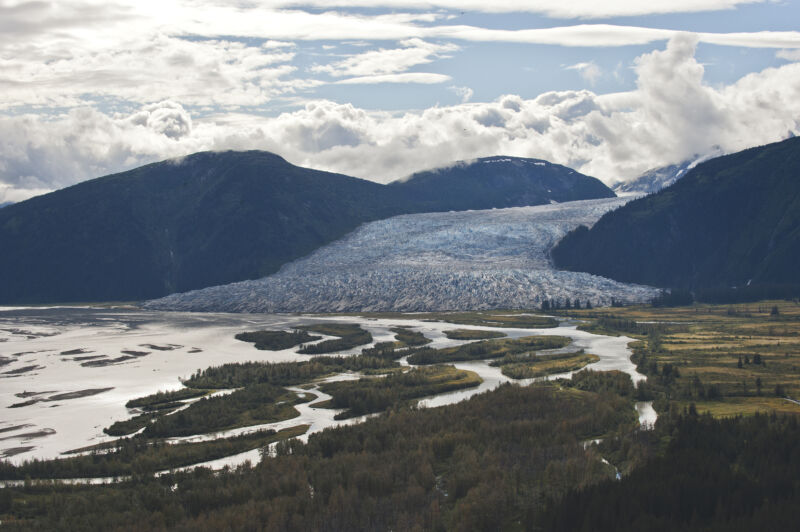Alaska’s top-heavy glaciers are approaching an irreversible tipping point
Ars Technica » Scientific Method 2024-07-07

Enlarge / Taku Glacier is one of many that begin in the Juneau Icefield. (credit: Mauricio Handler / Getty Images)
The melting of one of North America’s largest ice fields has accelerated and could soon reach an irreversible tipping point. That’s the conclusion of new research colleagues and I have published on the Juneau Icefield, which straddles the Alaska-Canada border near the Alaskan capital of Juneau.
In the summer of 2022, I skied across the flat, smooth, and white plateau of the icefield, accompanied by other researchers, sliding in the tracks of the person in front of me under a hot sun. From that plateau, around 40 huge, interconnected glaciers descend towards the sea, with hundreds of smaller glaciers on the mountain peaks all around.
Our work, now published in Nature Communications, has shown that Juneau is an example of a climate “feedback” in action: as temperatures are rising, less and less snow is remaining through the summer (technically: the “end-of-summer snowline” is rising). This in turn leads to ice being exposed to sunshine and higher temperatures, which means more melt, less snow, and so on.